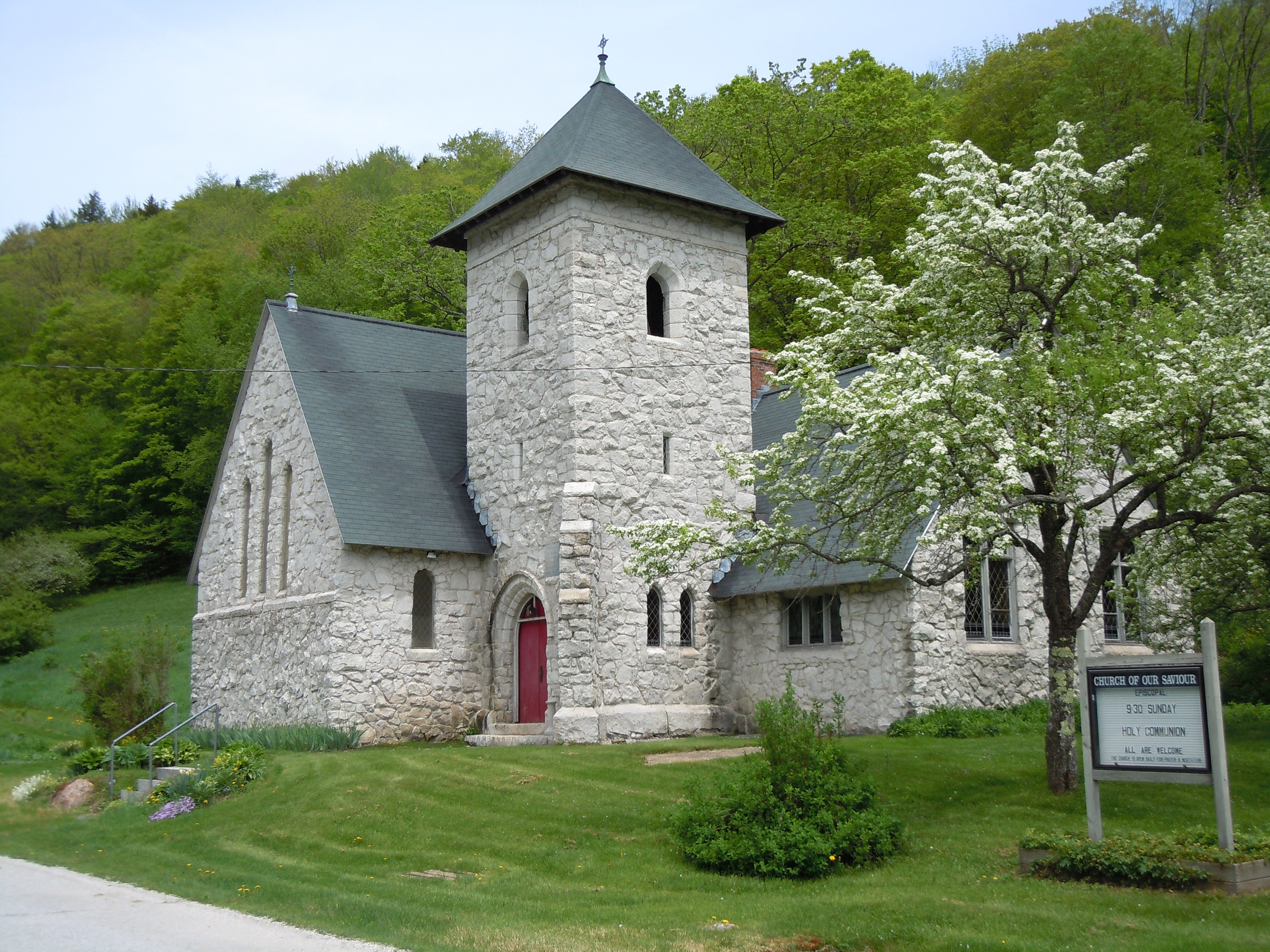Long before Killington, VT, became a popular skiing destination, this quiet New England town was home to a small Episcopal congregation dedicated to enriching its surroundings. Elizabeth Wood Clement envisioned that the Church of Our Saviour, built on the Mission Farm property in memory of her late husband, Charles Clement, would serve the local community as a meeting place for social gatherings both mundane and sacred. Modeled after a common English country church design, the Gothic revival-style stone building was dedicated in 1895 and formally consecrated with its first service in 1897.
Due to its rural location, Church of Our Saviour has always been a small congregation; in early 2009, it drew only about 12-18 worshippers each Sunday. The congregation maintained a strong commitment to hospitality and inclusiveness – the Mission Farm property, under the guidance of Reverend Truman Heminway, opened a guesthouse in 1942. Following several years of disuse, the congregation reopened the building as Heminway House in 1996, and guests have included other church groups, youth organizations, and nonprofits. For the most part, however, Our Saviour did not actively seek any lasting community partnerships. Rather, the greater community took the initiative to reach out to the church. As a result, Church of Our Saviour was left to address its needs largely on its own.
Things changed in September of 2009, when five congregation members participated in Partners for Sacred Places’ New Dollars/New Partners for Your Sacred Place training program, sponsored by the Episcopal Diocese of Vermont. The team was trained in evaluating its building and designing fundraising projects. Since then, several projects have been identified and completed, including dead tree removal, improved drainage and protection of the church’s stone foundation, and, with the aid of a diocesan grant, a new roof on Heminway House.
Most importantly, the church’s representatives were introduced to asset mapping as a means of forging community partnerships. In February of 2010, Our Saviour’s New Dollars/New Partners team met with the entire congregation to map out their resources, gifts, and talents, and based on the results, design and implement a plan of action. They embraced the “glass half-full” approach by focusing on their assets rather than what they lacked. These assets were seen as opportunities for integrating the congregation into the wider Killington community, benefiting both and drawing them together as partners in caring for and maintaining the church.
Once the congregants recognized their church’s potential, they began reaching out. Our Saviour quickly became a rainy-day location for outdoor concerts run by the local library. With its sanctuary’s excellent acoustics, the church typically hosted four to five concerts per year. It worked with the town’s Economic Development and Tourism Office on a scenic byways initiative and a 15K fundraising run, thus solidifying the congregation’s important role in promoting Killington. Other projects were smaller in scale yet equally effective in getting the congregation noticed in the community. For example, a few members realized that Mission Farm Road was a popular route for local dog-walkers, so they set up a seasonal water station. Other initiatives include creation of a network of trails in the extensive woodlands in concert with a town effort to identify and map hiking opportunities, and a partnership with the Farm & Wilderness Foundation (a summer camp with an agricultural focus) to utilize Mission Farm’s arable land and guesthouse, as well as collaboration with the Killington Music Festival and the local arts guild to use the church as a performance venue or gallery space.
With the help of New Dollars/New Partners, Church of Our Saviour has gone from passively providing hospitality and spiritual space to actively pursuing partnerships outside its inner circle. The congregation has been thoroughly energized with a new sense of purpose. In reaching out and staking its place as a community asset and spiritual center in Killington, the church has truly become a small sanctuary with a big tent.

